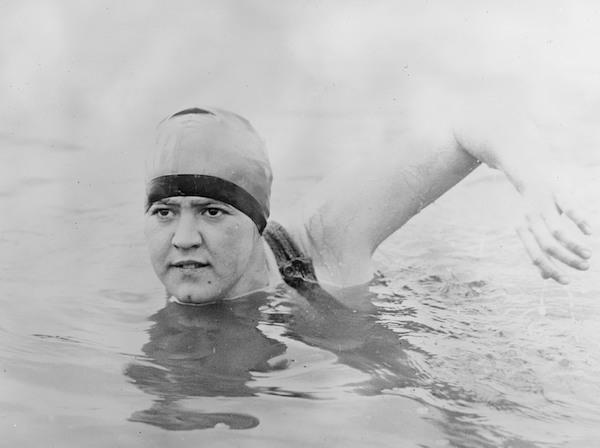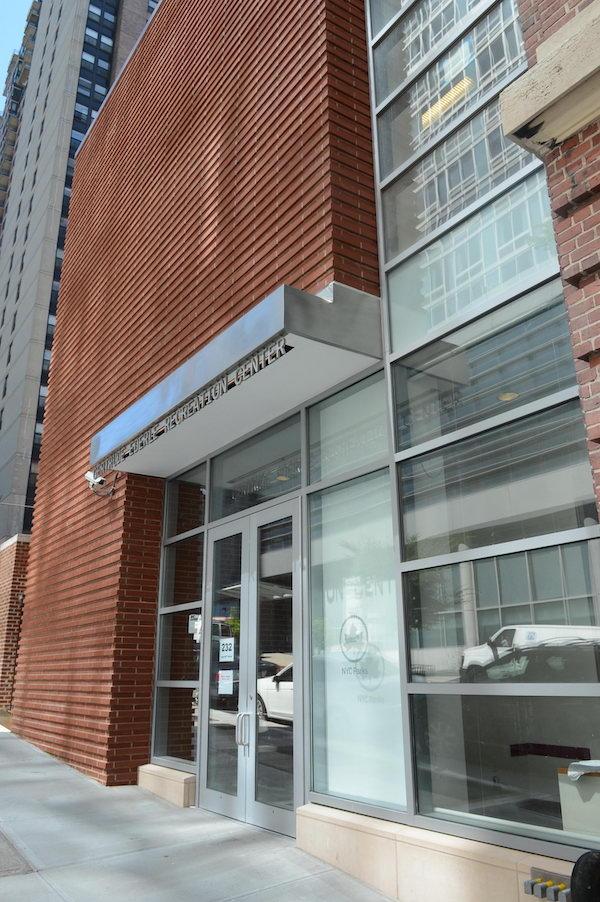Photos and newsreel clips from 1926 show Gertrude Ederle wearing a two-piece red swimsuit and matching bathing cap as she emerges victorious onto the banks of the English Channel. At 20, on her second try and coated in sheep grease, after having battled rough waves and stinging jellyfish, she had crossed from France in 14 1/2 hours. This was 1 hour and 59 seconds faster than the men’s record. She was the first woman to accomplish this feat and would become one of the most famous athletes in the world.

c/o Bain News Service / Public domain
Born in 1906, Gertrude Ederle grew up with her parents and five siblings in an apartment at 108 Amsterdam Avenue in the San Juan Hill neighborhood. The apartment was right above Ederle and Brothers Meat Market, her family’s business, where they sold homemade sausage, along with groceries.
Advertisement
Complications resulting from contracting measles at age 5 marked her life forever, leaving her partly deaf in her right ear. Although warned by doctors not to swim to avoid worsening her condition, Gertrude could not stay out of the water.
Eventually, she dropped out of school to join the recently formed Women’s Swimming Association and began training for competitions. The Association promoted women’s health and fitness and was also at the forefront of the women’s suffrage movement. Gertrude’s success in one swimming competition led to more. She was on the women’s 1924 Olympic Swimming Team with Christine Epstein, the founder and leader of the Women’s Swimming Association, as the team leader. Gertrude brought back a Gold and 2 Bronze Medals.
But this left her feeling unfulfilled; she felt like she could have done better. This motivated her to take on the challenge of swimming the Channel. She succeeded on her second try. “I just knew if it could be done, it had to be done, and I did it,” she commented after achieving her goal.
On her return to New York, she was honored with a ticker tape parade in lower Manhattan. President Coolidge called her “America’s best girl.” Gertrude participated in various promotional tours and celebratory activities, but generally her fame faded. She became completely deaf and while she no longer competed, her interest in sports continued as she taught swimming for many years at the Lexington School for the Deaf.
In more recent years, the UWS recreational facility where Gertrude once practiced, located at 232 West 60th Street, underwent a major renovation and was renamed the Gertrude Ederle Recreation Center. Still in a COVID-pause, we hope it will soon reopen and continue to provide a wide variety of affordable programs for New Yorkers of all ages.
Here’s the center’s official website.

c/o nycgovparks.org



Thanks for the wonderful write up about this important historical figure! Great to learn more about what was happening in this neighborhood and accomplished by inhabitants so many years ago.